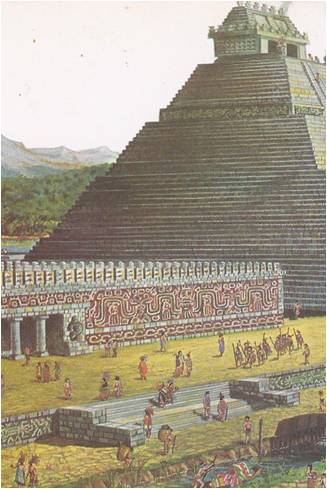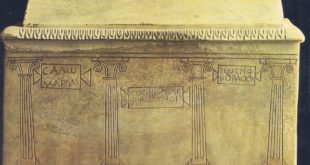THE BLAST OF MUSKETS and the clang of swords against armour echoed across the plains of Italy, Spain and the Lowlands. Warriors of the king of France were clashing with the Spanish infantry and German knights of the Holy Roman Emperor. Control of the nations of Europe was the prize both nations sought. They schemed and plotted; their generals planned campaigns; their soldiers marched out to victory or defeat.
Victories counted for little, for much of Europe’s future was decided by another, different kind of war – a war for the minds and souls of men. Village squares and royal council chambers, churches, university lecture halls and schoolrooms were the battlefields of this new war. Its troops were armies of preachers whose battle-songs were hymns and whose weapons were Bibles and textbooks. Reformers were on the march, Lutherans and Calvinists. Their thundering voices shook the domes of ancient cathedrals and wakened bishops dozing in their palaces. The Reformers won no easy victories‚ however. The forces of the pope were also on the march and the strongholds of the Church were well defended. Frightened by rebellions in Germany and Switzerland, the Catholic leaders in Rome took further measures to strengthen the Church.
“There is but one way to silence the Protestants’ complaints‚” a learned churchman told the pope “and that is not to deserve them.” Lowly monks and the powerful cardinals alike began to talk of reform, of hard work, of honesty and godliness. Gradually there were deeds to match the talk — a great Church house-cleaning that one day would be called the Counter-Reformation.
Meanwhile, in Europe’s towns and colleges‚ new soldiers of the Church appeared. Their uniforms were the simple black robes of monks, but their minds were as keen as dueling swords — much too sharp and smooth, said the Reformers who met them in battles of words. These men were the Jesuits, the pope’s most skillful defenders. They were led by a Spaniard, Ignatius Loyola, a warrior who had turned to teaching and dreamed of becoming a saint.
The people of the little Spanish town of Pamplona had known Don Inigo Loyola as the proud son of a nobleman. He was a dashing young man who delighted in stories of knights and deeds of daring, felt more at home in the saddle than in the soft chairs in his father’s castle and never traveled comfortably without his metal breastplate, dagger, sword and musket. In May, 1521, when French invaders blasted a hole in the city wall of Pamplona, the townsmen saw Don Inigo rush to defend the gap. They saw a cannon-ball strike him down and watched as he was carried home, his left leg wounded and his right leg so mangled that it hardly seemed to be a leg at all.
It was months before Don Inigo was seen again in the city’s streets and then he came walking, limping on the leg that would never mend. He was greatly changed. Though his eyes burned with a new brightness and he had the proud bearing of a soldier, he did not wear his sword and dagger, but carried them in his arms. Don Inigo walked out of the city and took the long, dusty road that led to a shrine called Montserrat. There, beside the statue of the Virgin Mary, he hung his weapons. All night he stayed at the shrine, like a knight preparing himself for a campaign. In the morning he set forth, not for a battlefield, but for Jerusalem. He was God’s knight now, he said, and if God willed it he would teach the Turks the beliefs of Christianity.
The change in Don Inigo had come during the endless days and weeks when he could not move from his bed. He had longed then to read the tales of knights and chivalry, but his father, no reader, had never bothered to keep a library. The only books in the castle were religious works and stories of the saints. Don Inigo began to read them; he needed something to help him forget the pain in his legs and the knowledge that he would never walk or ride properly again. As he read and daydreamed and brooded about his future, the books — tales of the courage and noble deeds of St. Dominic and St. Francis and the rest — began to excite him. One night he saw a vision of the Virgin Mary holding the baby Jesus in her arms and in the morning he had no doubts about his future. He was certain that God meant him to try to be a saint, to serve the King of Heaven as he had once served earthly Kings. Don Inigo promised himself that, when he was well, he would begin his service to his new master with a pilgrimage to Jerusalem.
LOYOLA BECOMES A MONK
He was forced to delay the journey. For more than a year, wars and an outbreak of the plague kept Loyola from leaving Spain. Worse, he began to be tortured by doubts. It had been so easy to dream of becoming a saint; now he knew that he was a sinner, perhaps beyond hope of saving. He hid himself away in a cave. Seven hours a day he prayed and three times a day he whipped himself. He left his hair and fingernails uncut, let storms beat upon him, begged for his food and left uneaten most of the scraps he collected.
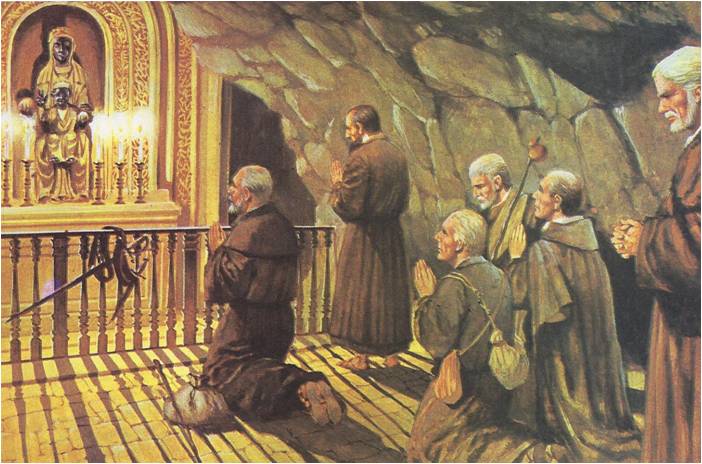
Once Martin Luther had punished himself in the same way, hoping to drive out the feeling of sinfulness that haunted him. It had not helped him, neither did it help Loyola. Like Luther, the young Spaniard began to look for some other way in which to make his peace with God; he found it in the rules and power of the Church on which Luther had turned his back. Luther had seen hope for mankind in the mercy of a God of grace and in the faith that every man was free to seek for himself. Loyola looked to a God of discipline whose mercy could be won only by unquestioning obedience to the Church and to the churchmen who represented God on earth. Two Christians could not have held more different beliefs, yet both of them fought desperate battles with doubt, and, when those battles were won, both fought for the things they had come to believe. Luther had become the leader of the Reformation, a rebellion against the Church. Now Loyola became the Champion of the men who strengthened and defended the Church against the Reformation.
Loyola had heard almost nothing about Luther and the reformers. Spain was pious and old-fashioned. Its kings and churchmen had long worked together to prevent the spreading of new ideas and heretics were punished so severely that even the Calvinists were frightened away. To most Spaniards, it seemed that the greatest danger to the Church came from the Moslem Turks, who cared nothing for the Christian Church but too much for Christian land. The Spanish had spent years fighting the Moslems. When Loyola felt that he was ready to begin his service to God, he went back to his old plan. He would carry God’s word to the Turks who held Jerusalem.
In 1525 Loyola did indeed enter Jerusalem, but the city’s masters refused to let him teach. He turned back to Europe and became a wanderer, journeying from one university to another, studying and struggling merely to live. In Paris he begged for his food like any street beggar and lived in a poorhouse so that he could get on with his studies. Thin, ragged and dirty, he looked more like a vagabond than a leader of the Church. He was a brilliant student and his ideas began to excite other young men in his college. He showed them the book he had begun before he left Spain, a book of instructions for Christians. Christians, he had written, must learn to suffer, as he himself had done, until they knew that they were sinners and hopelessly evil. After that they could begin to understand the mercy of God and of Jesus and His mother Mary, whose kindness would save them even though they did not deserve it. They would discover a new life, a life of obedience to the laws and teachings of the Church. Loyola had not forgotten his training as a soldier and he was careful to write that obedience to God also meant obedience to all of His officers — the pope, cardinals, bishops‚ priests and the rest. A man must be ready to believe, Loyola wrote, that what seems white to him is really black if the Church says it is black.
This was a stern, demanding way of practicing religion, but several of his fellow students agreed that it was the only way. In 1534, six of them joined him in a brotherhood. In a little chapel in Paris, they solemnly swore their obedience to God and the Church. Four years later, they traveled together to Rome to offer their services to the pope.
Rome, the capital of the Church, held some surprises for the students from Paris. It was less a city of God than a city of confusion. Its Christian shrines and churches stood side by side with ancient temples of pagan gods. The costly mansons of the cardinals rose above dark, filthy alleys roamed by countless beggar, bandits and pale, homeless children. Rome’s shops displayed elegant baubles of gold sprinkled with jewels but the people peering through the shop windows lacked the money to buy food. Rome’s libraries were filled with the greatest collections of books in the world, yet few citizens could read and their children had no schools.
Rome was a city of palaces but entire sections of the city lay in ruins. They were grim reminders of a pope whose concern with politics as well as religion had brought an invading army crashing through the city walls. Though the invaders had long been gone, the fear they had brought lived on. Churchmen and townspeople alike shuddered at the thought that the pope no longer had the power to deal as an equal with kings or to defend his city without the aid of outsiders. The revolts of the reformers had added to Rome’s worries. The papal court and the cardinals’ palaces echoed with frantic arguments as the leaders of the Church looked for some way to save it before it collapsed.
THE SOCIETY OF JESUS
Loyola, the unknown leader of half a dozen ill-clad students, knew little of court discussions, but, he could see for himself the ignorance, poverty and sickness in the streets of Rome. He resolved to do what he could to help the common people of the city. Though he was as poor as they were, he had one kind of riches to share, his wealth of knowledge. He set up schools and missions and preached to men who had never had the meaning of religion and God explained to them. When Loyola had worked in Rome for five years, he humbly asked the pope to allow him to found a new order of monks, the “Society of Jesus.” Its first duty would be to instruct children and the illiterate in God’s commandments. The members of his Society would vow to live in poverty and chastity, as monks did and they would make a special oath of obedience to the pope, swearing to go wherever he should send them. In 1540 the pope gave his permission. The Society of Jesus began new projects — a little college, an orphanage and a hospital — and Inigo Loyola, now officially a monk, was called by the Latin version of his name, Ignatius.
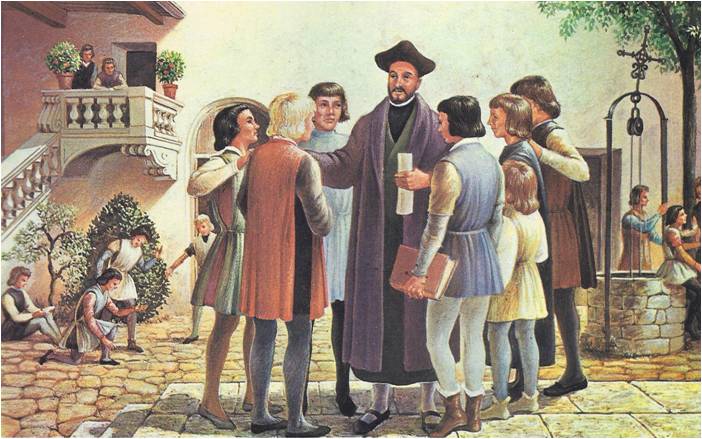
The pope, Paul III, was rather puzzled by the followers of Ignatius Loyola. They offered to obey him without question and were willing to work in slums and backward villages where there was no hope of gaining power or riches. However, it did not seem that they could do any harm and perhaps they would do some good. Certainly, the pope said, the Church needed some examples of doing good. Pope Paul agreed with the men in his court who insisted that it was time for reforms. He had grown impatient with the old-fashioned princely cardinals, rich and fond of pomp, who insisted that any change was dangerous (and likely to cost them money). On the other hand, he was afraid of the great changes suggested by some of his advisers, who seemed to want to alter everything. Should the Church change its mind about Luther’s ideas, he asked, and Calvin’s? Should all the old, honorable ceremonies of worship be forgotten, should nuns and priests be allowed to marry and should men be encouraged to decide about religious matters for themselves without advice from their priests and bishops?
The answer of Cardinal Caraffa, the pope’s favourite adviser, was no. The strength of the Church lay in its ancient rules; if they were strictly enforced there would be no need for other reform. Caraffa pointed to Spain, whose kings had given power to Church judges, the Inquisitors. They upheld the laws of the Church by condemning those who disobeyed them to torture or execution. Of course, the Inquisitors’ methods were harsh‚ but in Spain there were no Luthers. If other countries were given Inquisitors they would have no Luthers, either — a little harshness could do a great deal of good.
Urged on by Caraffa, Pope Paul in 1542 founded a Roman Inquisition, a Church court that could call to trial any Catholic in Christendom. He appointed six cardinals as Inquisitors-General and granted them power to imprison heretics, to take away their lands, houses, gold and to condemn them to death. Cardinal Caraffa, one of the six new judges, hurried to buy a palace for the Church court. He fitted out its cellars and back rooms with shackles, cages and other equipment designed to discourage Protestants. He also issued a list of strict rules. According to one of them, no man was “to lower himself by showing any patience to any sort of heretic, particularly a Calvinist.” Then the Cardinal sent his officers roaming in Italy in search of men whose ideas could be called dangerous to the Church — writers whose words were too bold, artists whose paintings were too worldly and scholars or scientists whose theories and experiments were out of keeping with the official ideas of the Church. Hundreds of such men were put on trial. Italy, once a center of learning and art and the most up-to-date nation of Europe, began to be a bit backward, a place where men of ideas held their tongues.
In 1555 Cardinal Caraffa was elected pope — a reward for his tireless efforts to sweep the world clean of heretics. The housecleaning of the Church began in earnest. Caraffa, now Pope Paul IV, was seventy-nine, hot-tempered, impatient and quick to remind his churchmen of the duties they had so long forgotten. Wandering bishops, prodded by the pope’s commands and threats, rushed home to their cathedrals and congregations. The monks of Rome began to take more interest in prayer and less in dinner. Priests began to pore over their Bibles. By order of the Pope, the indulgence-peddlers went out of business.
Pope Paul IV was not satisfied with reforming only churchmen. He intended to reform the whole of Christendom. To him, that meant teaching every man in Europe to bow to the word of the Church as men had done in the Middle Ages, when no king was more powerful than the pope. He sent inquisitors everywhere — into France and Germany, the Lowlands, Switzerland, Scandinavia and England — and waited eagerly to hear that the heretics had been silenced. The reports were disappointing. The rulers of Europe, kings and princes who had courts and judges of their own, had no wish to hand over their subjects to Church courts controlled by a ruler in Rome. They gave a cool welcome to the inquisitors. The reformers preached as noisily as ever, and the papal commands that thundered in Italy made hardly a clatter in the cities north of the Alps.
THE INDEX
In Rome, however, the pope’s word was law and the Romans obeyed it, whether they wished to or not. All plays and dancing, light-headed songs and paintings that the pope called pagan were forbidden. An artist was hired to paint clothes on the naked figures that Michelangelo had painted in the Sistine Chapel. To make certain that dangerous theories and improper stories would not be spread about, Paul had his advisers make up a list of banned books, the Index. On the Index were works by many of Italy’s greatest writers, including Boccaccio and Machiavelli. Books of ancient Greek and Roman philosophers, teachers and poets were listed. So were some books of science and mathematics from the East, and, of course, all the writings of the reformers. No Christian, commanded the pope, should read the books on the Index and indeed, it would be best if they were destroyed.
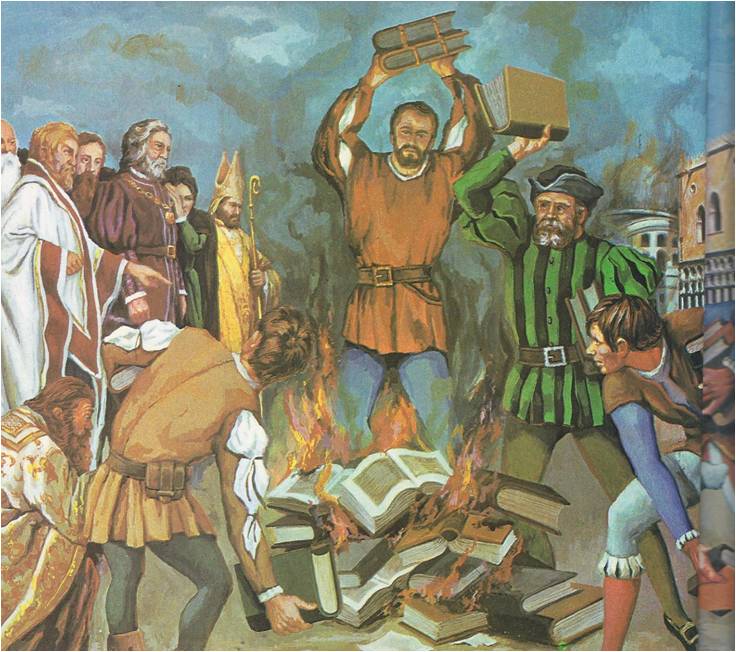
A series of book-burnings began. On one Saturday afternoon, 10,000 volumes were burned in Venice, the city whose printers had been famous for publishing the finest books in the world. The pope praised this show of Christian obedience and suggested that the authors of the books might well have been thrown on the fire along with their writings. “If my own father were a heretic,” he said, “I myself would gather the wood to burn him.” He ordered the inquisitors to seek out more men with dangerous ideas and to punish them more severely.
Punishment was an almost useless weapon in the contest for men’s minds. Though people hid their beliefs from the inquisitors, they did not change them. Indeed, Paul’s threats drove more people away from his church than into it. The victories the Catholics did win were not the work of the pope but of the followers of Ignatius Loyola‚ who had learned to do battle as the reformers did, with quiet reason, argument and good deeds. Members of the Society of Jesus could be found in surprising places now — in royal courts and the mansions of Europe’s richest merchants. Loyola had insisted that the men who taught in his schools be the best of teachers and soon they were invited to tutor the best of pupils — princes and princesses. As the royal students grew up, they came to rely on their teachers. They invited them to stay in their courts and the brothers, humble men who had set out to teach Rome’s poor, became advisers to kings.
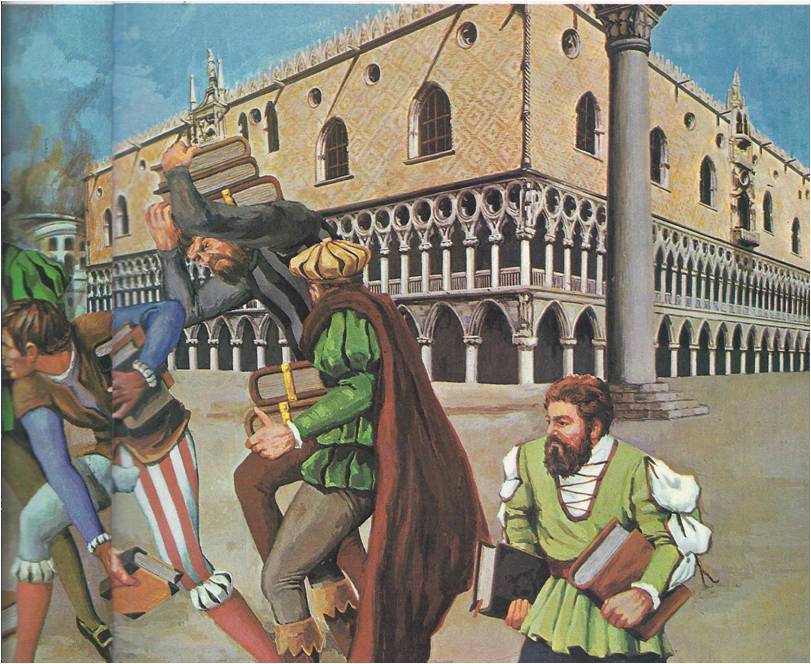
Great churchmen had also come to rely on the followers of Loyola. The Catholic bishops of Germany begged them to come to their cities as university teachers and preachers, for they seemed to be the only Catholics with enough education and skill in debate to argue with the Lutherans. Protestants began to denounce the brothers as wily, sly and dangerous persuaders who could truly convince a man that white was black. Calvin tried to defeat the members of the Society of Jesus with scorn — “These Jesuits,” he always called them. The brothers took the name as a title of honour, wore it proudly and worked even harder to win back souls for their church. Jesuit missionaries settled in Poland, which once again became a loyal Catholic country. Other Jesuits were nearly as successful in Hungary and Bohemia, the centers of the first Protestant revolts. Such victories had seemed impossible a few years before, when the armies of Lutherans and Calvinists spread across northern Europe. Now, with the Jesuits, the Catholic Church had a force of preachers so disciplined, so well-educated and dedicated in spirit that even tough, unbending Calvinists sometimes faltered before them.
THE COUNCIL OF TRENT
Ignatius Loyola, dreaming of sainthood and planning like a soldier, had done his work well. He had watched his little band of teachers grow to more than a thousand. He could count with satisfaction the number of cities they had won back to the Church and the dozens of universities that they had founded. Before he died in 1558, he saw them called as advisers to the Council of Trent, a conference as important as any in the history of the Church.
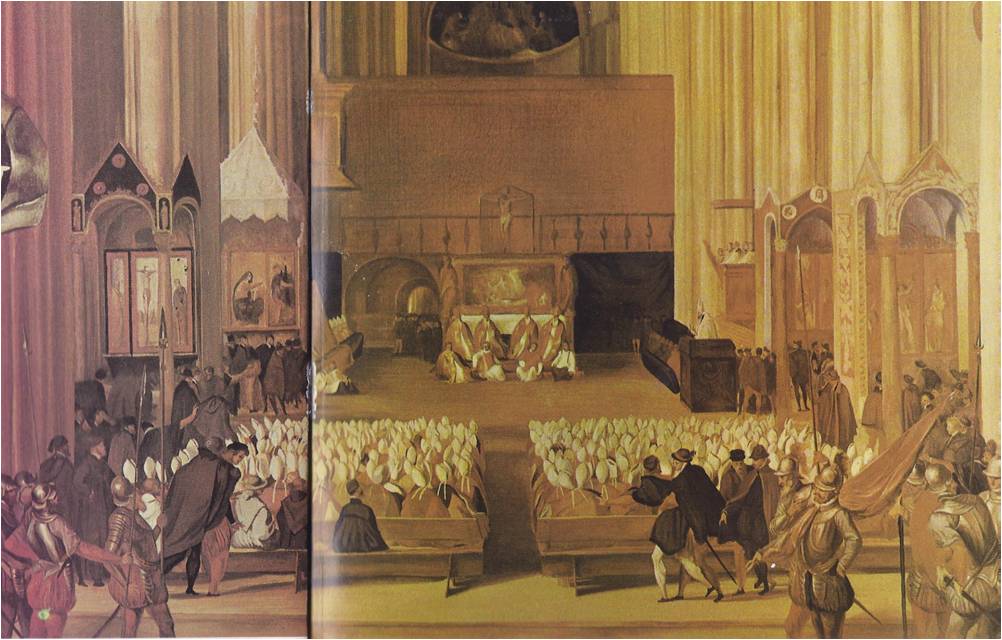
Churchmen and diplomats had talked for years about a great council to reform the Church, but one pope after another had put off calling the council together. None was eager to invite a crowd of reformers to poke into Church business, investigate the Church treasuries, ask why so many relatives of popes were appointed to high Church offices and perhaps try to reform the pope along with his priests and monks. The king of France and the Holy Roman Emperor had also done what they could to postpone the meeting, for each feared that the council would side with one of them against the other.
The Protestants had grown stronger and noisier every year, the Church had grown weaker and at last Pope Paul III decided that it would be less dangerous to hold a council than not to hold it. It was time, he said, for the Church to show the world that it could mend its ways; indeed, it was almost too late. The king and the emperor reluctantly agreed. After some squabbling between the Romans and the Germans, Trent was chosen as the town in which the council would meet. It was on the Italian side of the Alps but far to the north of Rome, which was convenient for no one and thus satisfied everyone. On December 13, 1545, twenty-eight bishops and cardinals met together in Trent, read aloud Pope Paul’s solemn order calling for a council of all the Church, prayed for guidance and began to bicker.
Years passed. Paul died, his successors came and went and the bickering at Trent turned into bumbling. After countless committee meetings and endless debates, one thing only was settled: there would be no truce with the Protestants. Luther’s theories were thoroughly discussed and thoroughly condemned. Faith alone would not open the gates of heaven, the council decided, there must also be hope and love. The word of the Bible was important, but no more important than ancient Church beliefs that had never been written down. Church services should be in Latin, not in common languages.
CHURCH REFORM
Week after week the bishops solemnly droned on, moving slowly down the list of things that should not be changed. Once a Protestant army — a force of real soldiers this time, well armed with cannon and swords — came within a few hours’ match of Trent. The churchmen hastened to adjourn their meeting and leave the city; it was the only quick action they had taken in years. However, when the army went away and the churchmen returned, some Jesuits were invited to the council to make Suggestions. After that, though the speeches were as long as usual, progress was made at last, for the Jesuits were practical men who looked for practical solutions to the problems that had plagued their Church too long.
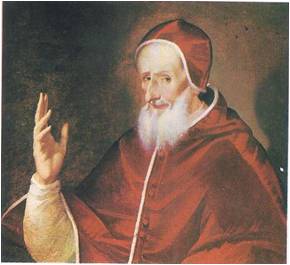
Obedience, honesty, discipline, education and preaching — these were the things Loyola demanded of men who sought to join the Society of Jesus, the weapons he taught them to use to defend the Church. At Trent, as the Jesuits helped design the plan for church reform, they made these principles a part of the council’s decrees. The bishops had been right, they said, to insist that men look to the Church for their ideas of God, honour the ancient ceremonies and obey the old religious laws. Such things should not be altered, nor should the vows of monks and nuns. Other things could and must be changed. Laziness, sinfulness, greed and plain stupidity had flourished in the Church of Rome and ruined its reputation.
The Jesuits insisted that indulgence peddling be forever outlawed. There must be stricter codes of conduct for monks, nuns, and priests — and for bishops and cardinals. The council should urge the pope to found many new Catholic universities to educate churchmen who could answer the arguments of well-schooled Protestants. Indeed, bishops and priests alike should be ordered to preach, to speak out with vigour, to guide their congregations and show them the flaws in Protestant heresies.
The Council of Trent came to a close in 1563, seventeen years after it had opened. The pope gave his official approval to the council’s work and the theories of Loyola became the rules of the Church, guideposts for every Catholic for centuries to come.
Of course, it was easier to write about reforms in a council hall than to enforce them in countless towns scattered across Europe. That did not discourage Pius V, the determined old monk who became pope two years after the council ended. Pius himself had always lived rather like a saint. He had fasted so often that his body was skin and bones. He preferred his scholarly religious books to the ceremonies of the papal court and when he sat in state on his throne, he still looked as though he had just crept out of a bare cell in a monastery.
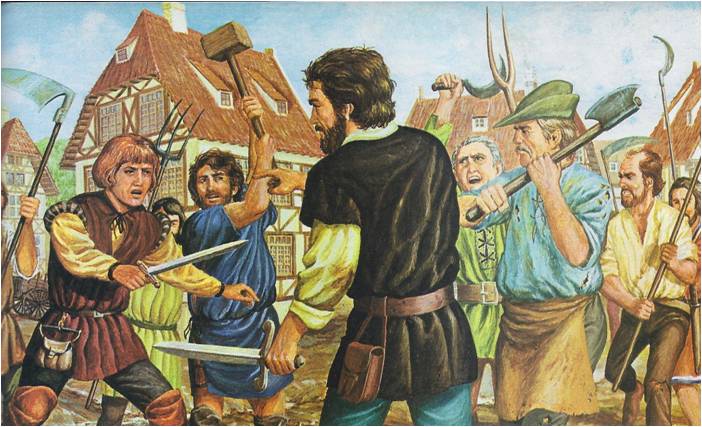
In fighting for the things he was certain were right, Pius was a match for the most fiery Calvinist. He quickly reformed his churchmen by decreeing savage punishments for any of them who shirked their duties, who took gold in return for appointing a man to a church post, or who simply lived too well. Then he set out to reform Rome. He set limits on the amount of money a man might spend on clothes or banquets. He forbade elegant weddings, large dowries and sent his officers to gather up the worldly baubles displayed in jewelry shops. He put such high taxes on carriages that almost no citizen could afford to own one and made it a crime for Romans to visit taverns. Parents were punished if their children did not appear at Sunday School. The public was forbidden to see the Greek statues in Rome’s church palaces. Pius wanted to destroy them, but his advisers persuaded him merely to hide them. Once again, artists were kept busy painting clothes on the famous wall-paintings in churches and mansions.
Some Romans said that Pope Pius would not be happy until he had turned the whole city of Rome into a monastery. The pope was looking beyond Rome — he meant to reform all of Europe and stamp out every trace of Protestant heresy. He learned that Europe’s rulers were jealous of their power and liked to write their own laws. Furthermore, Europe’s commoners did not want to give up their comforts and luxuries and Europe’s Protestants were stubborn. Pius grew impatient. He had once said that the Church needed neither cannon nor soldiers; its weapons were prayers and fasting, tears and the Bible. Now, however, he urged the Catholic rulers to set their police against the Lutherans and Calvinists. He suggested that it was almost a Christian duty for Catholic noblemen to match their knights against Protestant cities.
When the Catholics attacked, the Protestants were quick to fight back. Indeed, sometimes the reformers began the battles themselves. While Jesuits and Calvinists fought with words in their pulpits, their congregations settled religious disputes with fists, clubs and swords. Old friends fell out, neighbour turned against neighbour and the battles of preachers became soldiers’ wars.
THE HUGUENOTS
In France, the country where Calvin had been trained and Loyola had gathered together the first members of his society, the dispute between the Protestants and Catholics exploded into civil war. Noblemen ambitious for power proclaimed themselves the champions of one religion or the other. Their aim was more political than religious. They hoped to win followers, stir up a religious war and steal the throne of France from a boy king too young to rule.
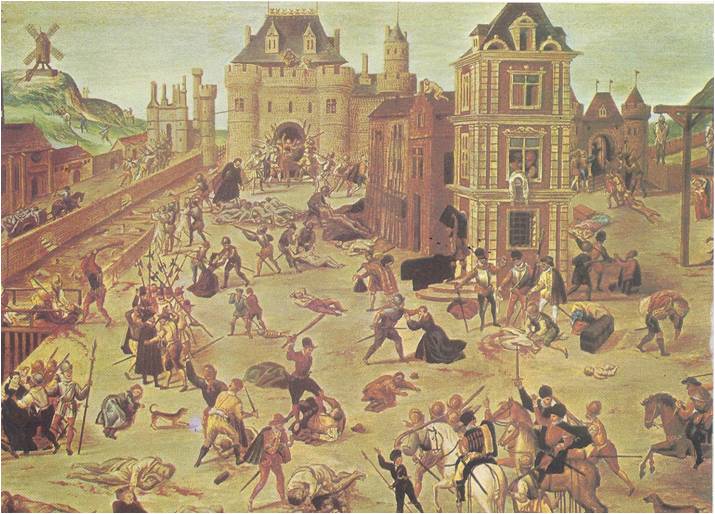
Queen Catherine, the mother of the little king, struggled to keep the peace by showing favour first to one group, then to the other. She believed her son’s crown would be safe as long as she did not choose sides. She called together the leaders of the Catholics and the Huguenots, as the French Protestants were called and asked them to try to settle their disputes in peaceful discussions. The bishops and preachers argued, fought and went away more angry than ever. There were plots and counter-plots. There were riots and someone tried to kidnap the king. When a Catholic duke sent his men to take charge of a Protestant city, a Huguenot duke declared himself the ruler of another, larger city. Then the followers of both dukes rushed for their weapons. In 1572, Queen Catherine arranged a truce and a marriage between the daughter of a Catholic nobleman and Henry of Navarre, a young leader of the Huguenots. The wedding was magnificent. More important, it seemed a ceremony of peace. In the streets of Paris, Catholics and Huguenots stood side by side to cheer the bride and groom.
A few days later, the streets of Paris ran with blood. A Catholic lord arranged the murder of a Protestant courtier, a favorite of the king and the queen was at last forced to take sides. She could punish the murderer, which would be a triumph for the Huguenots, or she could let him go free and thus encourage more murders of Protestants. That night she decided. At dawn — it was the morning of St. Bartholomew’s Day, a religious holiday — troops of royal guards moved silently to the mansions of Protestant leaders. They arrested the Huguenots as “enemies of state and crown,” and took them off to the executioner. After the guards came mobs of Parisian shopkeepers and craftsmen‚ who attacked the inns and houses where the Huguenot wedding guests were staying. Noblemen and merchants, preachers and students, old men, women and children were dragged into the streets and killed. Royal messengers carried the news to other French cities, where the massacre of St. Bartholomew’s Day was repeated. The queen‚ it seemed, had decided it was best not to anger France’s powerful Catholic neighbor, the king of Spain.
DIVIDED EUROPE
The fate of the Reformation in France was also decided on that St. Bartholomew‘s Day. Most of the Protestants who escaped the killings fled to other countries. A few staunch Huguenots stayed on and there came a time when it seemed that their long struggle might end in victory. After a long civil war, a Huguenot prince, Henry of Navarre, became the king of France. Though Henry had to become a Catholic to claim the throne in 1598, he did not forget his old allies. When he had been safely crowned, he signed the Edict of Nantes, which granted the Huguenots freedom to worship. The kings who followed Henry disregarded the edict and finally King Louis XIV did away with it altogether. Protestants were slaughtered or driven out of France. For centuries to come, France, its rulers and nearly all its people would be loyal to the Catholic Church.
As Europeans chose between the two branches of the Christian religion, a wall rose across Europe. Although the wall was imaginary, it was as strong as any built of stones and mortar. On one side of the wall — in France and Spain in Portugal and Italy — there were Catholics, loyal to the ancient Church of Rome. On the other side — in Germany, in northern Switzerland, England and Scandinavia — there were Protestants. On the sides, a few independent men dared to differ from their neighbours and their kings; they worshiped as they chose, but they did it quietly and often in secret, for it was dangerous to speak out.
One country, that collection of dukedoms, merchant towns and seaports called the Lowlands, was divided by the wall. The Lowlanders, like the French, mixed politics with religion and made a war. The trouble began in 1555, when Charles V, the Holy Roman Emperor, grew weary of struggling to hold together the many distant parts of his great empire. He gave up his crown, divided his lands and gave Spain and the Lowlands to his son, Philip II. Old Charles had grown up in the Lowlands. He knew its people and sometimes he called himself a Lowlander. His son had been raised a Spaniard and Lowlanders and Spaniards had entirely different ways. The Spanish were old-fashioned. They obeyed kings and lords without question and no one was more loyal to the pope’s church. The people of the Low lands, especially the northerners, were wealthy merchants and craftsmen. They were independent men who would not crawl before noblemen and greatly admired the ideas of Martin Luther and John Calvin.
To King Philip, the Lowlanders were rebels and sinners. He sent iron-fisted governors to the north and ordered them to silence the preachers and the believers in the new, false religion. He taxed the merchants heavily, passed laws requiring everyone to attend only Catholic churches and quartered Spanish soldiers in Lowland towns.
In 1568 the angry people of the provinces of Holland and Zeeland rose in revolt. Neighboring provinces of the north — all of the area called the Netherlands — joined the rebellion and King Philip sent his fiercest troops to beat the country into order. The people of the southern provinces, loyal to the Catholic Church, joined the battle on the side of the king. They learned to hate the northerners who had been their allies and trading partners for centuries. Sometimes there were months or years of peace, when Spaniards and rebels alike were too tired or too poor to go on fighting, but there was no surrender.
THE NETHERLANDS
The princes of the House of Orange, the leaders of the rebellion, called for the help of England’s Queen Elizabeth, who had quarrels of her own with King Philip. She was happy to send the Netherlanders the troops they needed. The English forces came, fought and went home again; battles were won and lost; a new king came to the Spanish throne and still the war dragged on. At last, in 1648, when the war had lasted eighty years, the king and the rebels came to terms. They agreed that the southern provinces of the Lowlands — the land that would one day be called Belgium would remain Catholic and loyal to Spain. The Netherlands would be independent, a new strong hold for men who believed in the ideas of Luther and Calvin.
The Spanish king told himself that at least he had saved half of the Lowlands. He was pleased, just as the pope was pleased, that half of Europe had remained loyal to the Church. There was little talk now of wars for religion. Europeans had made their choices between the old way of worship and the new. Bitterness and suspicion between Catholics and Protestants would remain for centuries. The wall built by religion still divided Europe. Across the channel in England, there was a puzzle: a national religion that combined the old and the new.

